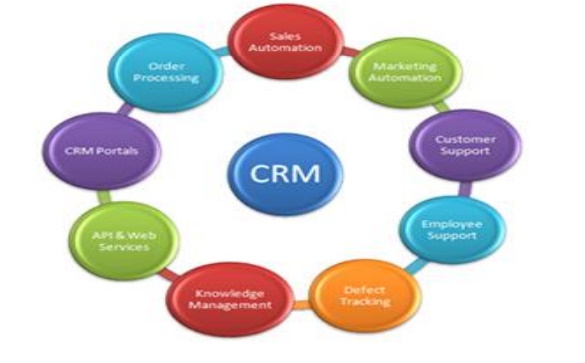Chapter: Business Science : Marketing Management : Buyer Behavior
Customer Relationship Management
Customer Relationship Management
Over a
century ago, in small-town America, before the advent of the supermarket, the
mall, and the automobile, people went to their neighborhood general store to
purchase goods. The proprietor and the small staff recognized the customer by
name and knew the customer's preferences and wants. The customer, in turn, remained
loyal to the store and made repeated purchases. This idyllic customer
relationship disappeared as the nation grew, the population
moved
from the farm communities to large urban areas, the consumer became mobile, and
supermarkets and department stores were established to achieve economies of
scale through mass marketing. Although prices were lower and goods more uniform
in quality, the relationship
between
the customer and the merchant became nameless and faceless. The personal
relationship between merchant and customer became a thing of the past. As a
result, customers became fickle, moving to the supplier who provided the
desired object at lowest cost or with the most features.
CRM is
―the development and maintenance of mutually beneficial long-term relationships
with strategically significant customers
CRM
consists of three components:
customer,
relationship, and
management
Customer:
The customer is the only source of the company‗s present profit and future
growth. However, a good customer, who provides more profit with less resource,
is always scarce because customers are knowledgeable and the competition is
fierce. Sometimes it is difficult to distinguish who is the real customer
because the buying decision is frequently a collaborative activity among
participants of the decision-making process [Wyner, 1999]. Information
technologies can provide the abilities to distinguish and manage customers. CRM
can be thought of as a marketing approach that is based on customer
Information.
Relationship:
The relationship between a company and its customers involves continuous bi-
directional communication and interaction. The relationship can be short-term
or long-term, continuous or discrete, and repeating or one-time. Relationship
can be attitudinal or behavioral. Even though customers have a positive
attitude towards the company and its products, their buying behavior is highly
situational [Wyner, 1999]. For example, the buying pattern for airline
tickets
depends on whether a person buys the ticket for their family vacation or a
business trip. CRM involves managing this relationship so it is profitable and
mutually beneficial. Customer lifetime value (CLV), discussed in Appendix C, is
a tool for measuring this relationship.
Management.
CRM is not an activity only within a marketing department. Rather it involves
continuous corporate change in culture and processes. The customer information
collected is transformed into corporate knowledge that leads to activities that
take advantage of the information and of market opportunities. CRM required a
comprehensive change in the organization and its people.
1.Determinants of CRM Trust
The
willingness to rely on the ability, integrity, and motivation of one company to
serve the needs
of the
other company as agreed upon implicitly and explicitly.
Value
The
ability of a selling organisation to satisfy the needs of the customer at a
comparatively lower
cost or
higher benefit than that offered by competitors and measured in monetary,
temporal, functional and psychological terms.
In
addition to trust and value, salespeople must:
Understand
customer needs and problems;
Meet
their commitments;
Provide
superior after sales support;
Make sure
that the customer is always told the truth
(must be honest); and
Have a
passionate interest in establishing and retaining a long-
term
relationship (e.g., have long-term perspective). Stages in the development of a
Customer Relationship
he
Pre-relationship Stage
The event
that triggers a buyer to seek a new business partner.
The Early
Stage
Experience
is accumulated between the buyer and seller although a great degree of
uncertainty and distance exists.
The
Development Stage
Increased
levels of transactions lead to a higher degree of commitment and the distance
is reduced to a social exchange.
The
Long-term Stage
Characterised
by the companies‗ mutual importance to each other.
The Final
Stage
The
interaction between the companies becomes institutionalized. Functions of
Customer Relationship Management
Direct
functions (are the basic requirements of a company that are necessary to
survive in the competitive marketplace)
Profit;
Volume; and Safeguard
Indirect
functions (are the actions necessary to convince the customer to participate in
various marketing activities).
Innovation:
Market; cout: and Access.

2.The role of salespeople as
relationship builders and promoters
Sales people
identifying
potential customers and their needs;
approaching
key decision makers in the buying firm; negotiating and advancing dialogue and
mutual trust;
coordinating
the cooperation between the customers and their company; encouraging the
inter-organisational learning process;
contributing
to constructive resolution of existing conflicts; and leading the customer
relationship development team
Managing the customer
Relationship
Initiating
the relationship
Engage in
strategic prospecting and qualifying; Gather and study pre-call information;
Identify
buying influences; Plan the initial sales call;
Demonstrate
an understanding of the customer‗s needs; Identify opportunities to build a
relationship; and
Illustrate
the value of a relationship with the customer
Developing the relationship
Select an
appropriate offering; Customise the relationship;
Link the
solutions with the customer‗s needs; Discuss customer concerns;
Summarize
the solution to confirm benefits; and Secure commitment.
Enhancing the relationship
Assess
customer satisfaction;
Take
action to ensure satisfaction;
Maintain
open, two-way communication; and
Work to
add value and enhance mutual opportunities.
Related Topics